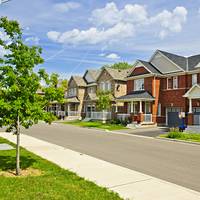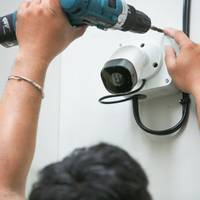How Remote Construction Monitoring Keeps Your Project Safe
In the UK construction market, project managers face numerous challenges, from managing tight deadlines to adhering to strict safety standards. Among these priorities, security often stands out as a critical concern. In the past decade, the integration of remote construction monitoring has proven to be a game-changer in mitigating potential risks, ensuring project safety and deterring criminal activity. Let's delve into how these systems are shaping the way UK construction projects remain secure.
1. Real-Time Surveillance
One of the principal benefits of remote construction monitoring is real-time surveillance. Cameras positioned strategically around a construction site can transmit live feeds to a centralised location. These feeds are continuously monitored, enabling immediate reactions to any potential threats or anomalies, ensuring that potential issues are spotted and dealt with promptly.

2. Deterrence Value
Visible cameras act as strong deterrents for would-be intruders or vandals. Knowing that they are being watched reduces the chances of illegal activity, as most perpetrators look for easy targets. Displaying clear signage indicating 24/7 surveillance further adds to this deterrence.
3. Cost-Effective Security
Hiring on-site security personnel around the clock can be an expensive endeavour. Remote monitoring offers a cost-effective alternative. By using technology to take over most of the monitoring tasks, construction managers can achieve robust security at a fraction of the traditional costs.
4. Enhanced Evidence Collection
Should an incident occur, having high-quality video recordings can be invaluable. Remote monitoring systems typically come equipped with recording capabilities, storing footage in cloud-based servers. This ensures that evidential records are maintained, making any legal or insurance-related issues more straightforward to navigate.
5. Integration with Other Security Measures
Modern remote construction monitoring systems are designed to seamlessly integrate with other security mechanisms. Whether it's motion sensors, access control systems, or alarms, the synergy between these components ensures a holistic security approach, providing multiple layers of protection.
6. Flexibility and Scalability
One of the key advantages of remote construction monitoring is its adaptability. Whether your project is a small refurbishment or a multi-storey building, these systems can scale according to your needs. As your project evolves, you can reposition cameras, add more surveillance points, or integrate additional tools as required.

A Robust Security Solution
While the benefits of remote construction monitoring are clear, it's essential to choose a solution that aligns with the unique requirements of your project. For those in the UK construction market seeking a trusted, comprehensive security solution, Crime Prevention Services offers a robust package tailored to meet your needs. With years of experience and cutting-edge technology, ensuring the safety of your project has never been more seamless.
In conclusion, as the construction landscape continues to evolve, integrating remote monitoring is no longer just an added advantage—it's becoming an industry standard for ensuring project safety and security. Investing in the right systems today can save significant costs, time and potential setbacks in the future.






